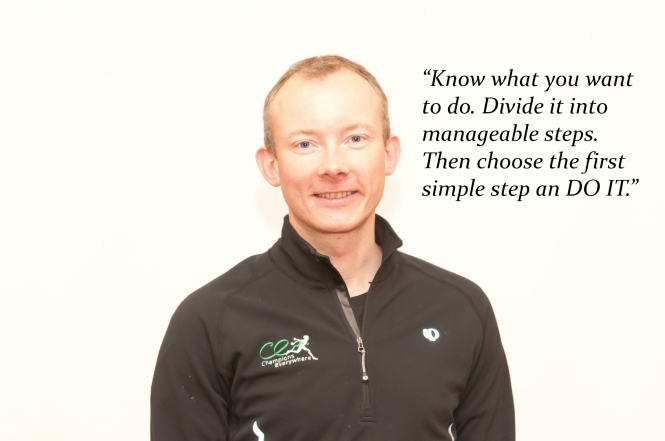
Training your body for the demands of running seems like an incredibly complicated process if you read many running books cover to cover. I see the process as being very simple.
Step 1: Know what you want to do
A simple clear goal helps you understand what is required in training. Completing a 5 km race in 20 minutes or less fits this description. You need to be able to run 4 min / km pace (12 kph) for 20 minutes without getting hurt. You need to be able to train consistently enough to achieve this based on where you are today.
If you can currently run 30 minutes then you have a longer journey ahead. If you run 20:02, then a few simple tweaks are all that are needed and not much time.
Step 2: Divide it into manageable steps
Some training plans today want to focus your mind on ‘training everything all the time’. I do not believe in this approach because I view running as a skill and when you try to learn everything at once you tend to do a poor job of it all.
Imagine learning to play the guitar: if you focus on learning two chords then you can become very strong and proficient at holding those two chords and striking a pure tune. You can practice the transition between chord A and chord D and back without the distraction of trying to learn other chords. Six weeks of practicing chords A and D will provide a better foundation than six weeks working on 10 chords at the same time.
Running is the same: you find out the first piece you need to and focus on that and you spend most of your time on that until you’ve reached a reasonable level of proficiency. Running 1 mile perfectly without pain could be what is necessary for one runner. For another it may be ‘running for one hour without losing my breath and having no pain in the 72 hours after’. For a seriously injured runner you may have to start at a more rudimentary level: ‘work on your foot until you can balance easily on one foot’. Whichever it is you focus your energy there.
Step 3: Choose the first simple step and DO IT
This step requires the most experience because you need to understand which of your weaknesses holds you back from doing the training required for what you want to achieve.
If you need to run 4:00 min/km for 20 minutes and you cannot currently take a single step without excruciating pain, then the first simple step is not to run. You need to work further back than that. Without experience you must work with a therapist or a running technique coach who can provide the first priority for you.
Should you be so fortunate to have no injury, you can use logic and experience to give you the first answer (or also take the advice of a coach). If 4 min/km pace feels really easy for you over short distances – your 200m time may be much much faster than that – but cannot maintain it, then you probably have an endurance problem and need to increase that first.
If you run very good times on the roads but struggle to get up hills, you may have a technical issue or lack power and strength. You can begin by taking the problem apart and seeing how long you can maintain a fast pace uphill and what seems to happen when you slow down. From that you can begin to deduct the training necessary to fix it. All journeys are easier with a coach (I’d say that, of course) but while running is simple in principle, there is no cookie-cutter recipe you can follow to success. You need to evaluate yourself and where your weakness likely is and then GO FIX IT. Let us say you weigh 110 kilos and are 6 feet tall. You struggle to get up hill. Your first priority is not building power and strength – it’s reducing your weight in a way that doesn’t compromise your health.
Think about these three steps before you begin training again: clarify what you want to do, break the problem into stages of training and then go do the first step.
